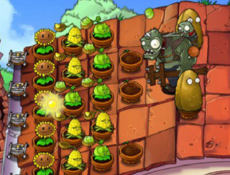Murder Game introduces players to an environment where trust and suspicion shape every action. The gameplay revolves around groups of participants who must complete basic tasks while one or more hidden murderers attempt to eliminate them. The central challenge comes from the uncertainty of knowing who can be trusted and who poses a threat. As the game progresses, tension rises, and each interaction becomes important for survival or deception.


Murder Game
Advertisement

Advertisement
Murder Game introduces players to an environment where trust and suspicion shape every action. The gameplay revolves around groups of participants who must complete basic tasks while one or more hidden murderers attempt to eliminate them. The central challenge comes from the uncertainty of knowing who can be trusted and who poses a threat. As the game progresses, tension rises, and each interaction becomes important for survival or deception.
Player Roles And Objectives
The structure of Murder Game is built around distinct roles. Regular players must focus on carrying out tasks, staying alive, and observing the behavior of others. Murderers, however, must secretly eliminate opponents without being discovered. A system of discussion and voting allows players to accuse others, remove suspects, or defend themselves. The balance of power shifts constantly, as suspicion can lead to both correct and incorrect decisions. This dual structure creates an experience that depends on communication as much as direct action.
Core Features
The mechanics of Murder Game can be outlined through several core features:
- Defined roles for participants with different goals
- Tasks that must be completed by regular players
- Elimination attempts carried out by murderers
- Voting sessions where players decide on potential suspects
These features ensure that the game maintains a steady rhythm between action and dialogue. The constant cycle of tasks, suspicion, and decisions keeps participants engaged, while the hidden role of the murderer adds a layer of unpredictability.
Strategy And Social Interaction
Murder Game requires players to combine strategy with observation. Regular players must pay attention to subtle details, such as movements and timing, while murderers must blend in to avoid exposure. Communication plays a major role, as players must justify their actions, defend themselves from accusations, or attempt to persuade others. The balance between logic and deception becomes central, and the outcome often depends on how well players can read the behavior of their peers. Unlike games focused only on speed or reflexes, this design emphasizes psychological skill and group interaction.
Replayability And Long-Term Appeal
The appeal of Murder Game lies in its unpredictable nature. Since roles are assigned randomly and players interact differently in each session, no two rounds are identical. This randomness ensures ongoing variety and replay value. The simple tasks provide structure, while the social deduction element keeps the experience dynamic. Whether approached casually or in longer sessions, the game supports repeated play by offering new challenges each time, driven by the people involved rather than fixed patterns.

































